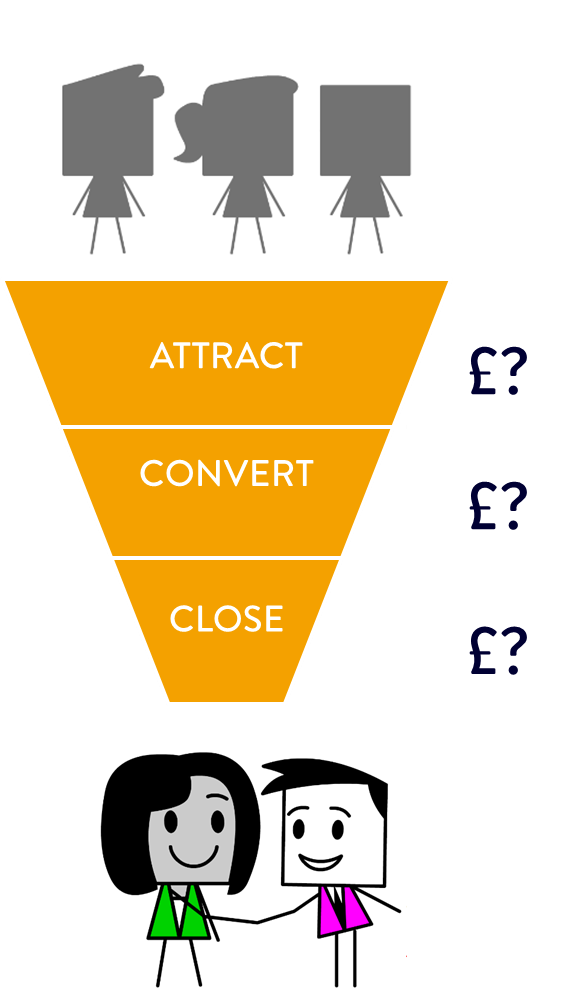
Companies that take the time and effort to carry out a sales pipeline valuation get a sense of how well they’re performing and are more likely to show increased revenue growth. So it’s definitely worth your while, but how do you measure it?
Determining the monetary value of your sales pipeline could conjure up visions of estimating the number of sweets in a jar – frustrating, verging on the impossible and based on various assumptions.
You need to know where to start. Is it worth looking at market value figures or just multiplying your average order by the number of potential customers?
First of all, we understand how quickly you can find yourself swimming in a flood of data, so it’s best to keep a streamlined sales pipeline involving fewer steps – keep it simple. Limit your sales process to six key stages:
- Prospect
- Lead
- Marketing Qualified Lead (MQL)
- Sales Qualified Lead (SQL)
- Opportunity
- Customer
It’s also worth remembering that each stage will have a different value within your sales process. So just because at the prospect stage your pipeline is worth £10,000,000 doesn’t mean that is what you will get!
Now we have an efficient sales pipeline method, agree on the criteria before you begin your valuation:
- Define what a qualified sales opportunity includes e.g. has it been BANTA qualified? – Budget, Authority, Need, Timescale, Attitude
- Work out your average order value and decide whether this is an accurate representative. Or you may want to use a weighted average* that takes into account a range between the upper and lower values as well as the mean cost.
- Identify your target universe as this represents the vast majority of the potential market. In order to get this right, be honest about whether your company will be able to afford your solutions before including them. Then, to find out the value of the universe, apply the weighted average* to the number of targets in the universe.
- Analyse your conversion rates throughout the sales process:
- From prospect to lead (include both MQLs and SLQs).
- From lead to opportunity.
- From opportunity to customer.
- Work backwards to see how this value changes from prospects to leads, then to opportunities, and finally to sales by applying your conversion rates.
* A weighted average can be worked out by adding the lowest order value to the highest, and then adding that to four times the average and dividing everything by six. This will give a value that takes into account the outlying values. You may want to change this average based on the type of customer or buyer persona.
Developing a weighted pipeline gives you a much better, proactive view into the future health of the business. Businesses that don’t analyse their sales pipeline fail to either identify the benefits or simply don’t know how to produce a strong sales outlook. Don’t let your company fall into this category. Let reality outdo optimism by being confident in your data.








